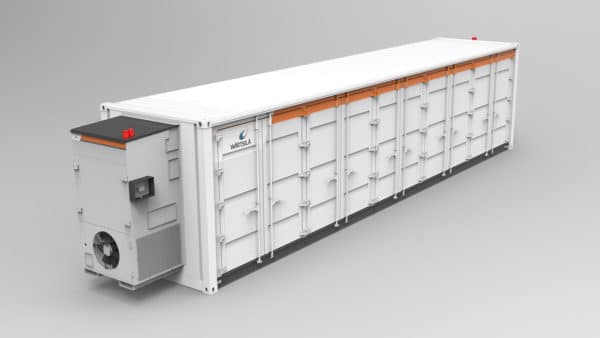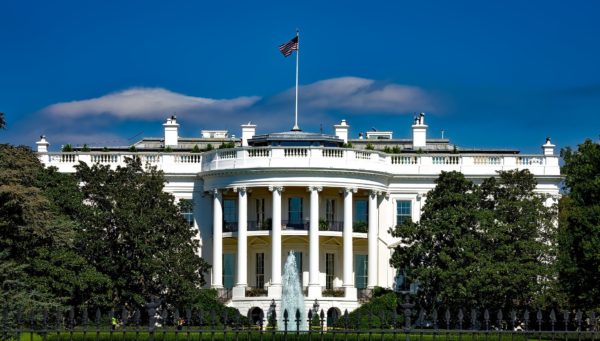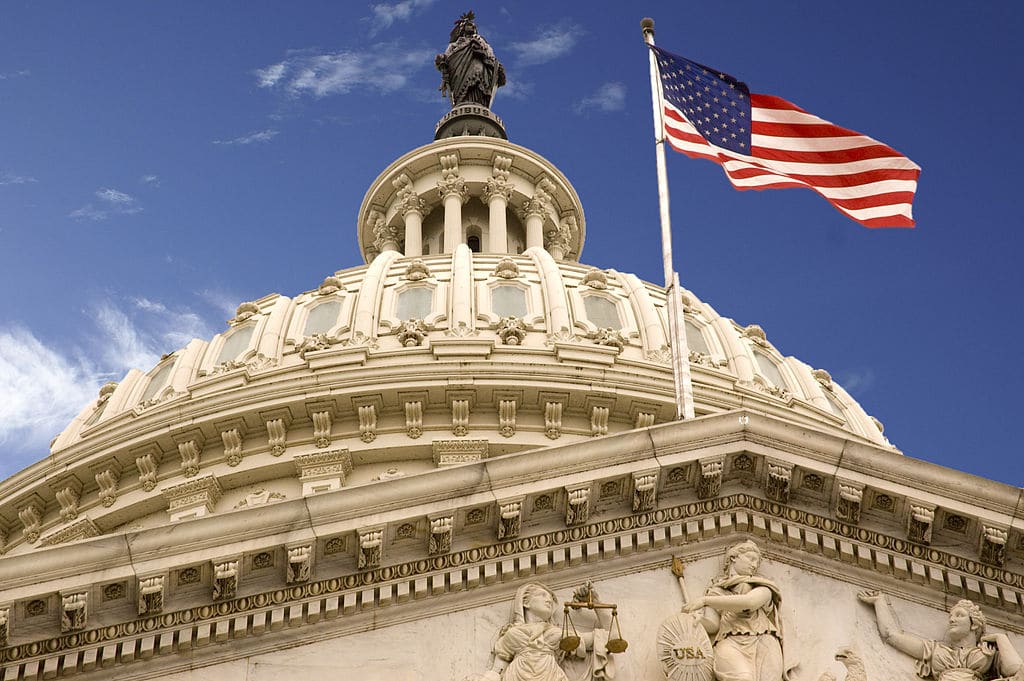Nearly 150 organizations appealed to U.S. House and Senate leaders on March 23 to make standalone energy storage projects eligible for the federal investment tax credit (ITC) in the upcoming infrastructure package.
A tax credit would help reduce the cost of energy storage deployment outright, spur investment, and create new jobs in the energy storage industry, they said.
Public interest groups including the Union of Concerned Scientists, the National Resources Defense Council, the Environmental Defense Fund and the Environmental Law and Policy Center joined forces with solar and storage industry associations to voice their support for standalone storage ITC eligibility.

Image: Wärtsilä
“We have 3 GW so far,” said Jason Burwen, interim CEO of the Energy Storage Association (ESA). In a report last August, ESA said that it is possible that by the end of the decade 100 GW of new energy storage will be deployed in the U.S.
Securing an ITC for standalone storage is key to achieving that goal because it would “create an investment signal and facilitate a rush of capital” into storage development that would match the demand for storage, the ESA report said.
At the state level, energy storage targets aligned with renewable portfolio standards will also be important tools to prepare the grid for increased renewable penetrations, the report said.
One Senate bill that would grant standalone energy storage ITC eligibility dovetails with Sens. Joe Manchin (D-WV) and Debbie Stabenow’s (D-MI) recently proposed American Jobs in Energy Manufacturing Act, which aims to incentivize domestic manufacturing of advanced energy technologies with targeted investment in rural areas and in areas where traditional energy sector jobs are based.
Strengthening the sector
By creating a domestic supply chain for energy storage, the Manchin-Stabenow bill provides a platform for renewable energy industry growth and economic development, Burwen said.
Also important is long-term policy to grow domestic manufacturing. Stable policies are vital because investments take years to pay off. “Manufacturers want clarity that there will be a strong long-term market,” said Gregory Wetstone, CEO of the American Council on Renewable Energy (ACORE).
The short-term nature – and piecemeal extensions – of the ITC also make it harder for businesses to plan, he said.

The Manchin-Stabenow bill needs to be paired with a tech-neutral ITC extension and with workforce development and community support incentives, said Suzanne Leta, SunPower’s head of policy and strategy, and a member the Solar Energy Industries Association (SEIA) board of directors.
A project’s economics alone won’t move the needle and spur renewable energy deployment in places where state-level support for renewable energy is lacking or non-existent, she said. She cited Manchin’s home state as a case in point: West Virginia ranks 49th in the U.S. in terms of solar installations.
Unlike other states, West Virginia offers no state-level support for solar; all it has is the federal ITC. For states in a similar position, commercial and residential access to renewable energy like solar is curtailed.
ITC based on GHG reduction
On the ITC, a best-case scenario for the renewable energy industry would be Senator Ron Wyden’s (D-OR) Clean Energy for America Act, which offers a technology neutral ITC, some sources said.
If or when Wyden’s technology-neutral ITC legislation from 2019 is resurrected, its tax credit would apply equally to all forms of generation and storage that contribute to reducing greenhouse gases.
Wyden’s ITC framework may offer other benefits as well, particularly for residential solar.

Image: SunStreet
Where the current residential solar ITC has been designed to phase out completely, the commercial solar ITC has a step-down process that stops at 10% and continues indefinitely. Leta said this policy difference is out of date.
In 2016, when the solar ITC had its last meaningful update, about 70% of U.S. residential solar systems were third-party-owned systems that were leased by residential solar customers; cash and loan-based financing represented the balance.
Today, the breakdown is reversed. That is because the ITC puts money back into the hands of customers who use cash or obtain a loan to get a home solar system. In a leased solar home system, the tax credit goes to the company that owns and leases the home solar system.
A tech-neutral ITC like Wyden’s would create a more level playing field between residential and commercial solar, and would obviate the need to tinker with the tax code to do that, Leta said.
Wyden’s ITC bill also would level the playing field for renewable power compared fossil fuels. By one estimate, U.S. direct subsidies to the fossil fuel industry totaled roughly $20 billion a year, with about 20% allocated to coal and 80% to natural gas and crude oil.
“And that’s without counting additional in-kind subsidies related to the public health and climate costs associated with burning fossil fuels,” ACORE’s Wetstone said.
To get a more reliable and resilient national grid, the U.S. needs to have 21st century technology in use. “Today, much of our grid is responsive to the demands of the 1950s,” Wetstone said.
He said investments are needed to upgrade and expand grid infrastructure, and build an interconnected macro grid that provides more interregional transmission to connect the separate regional grids.
Making those investment would better enable electricity to move more efficiently, at a reduced level of carbon emissions, and save electricity customers tens of billions of dollars.
Weaving it all together
A national green bank can also help make the U.S. reach its climate goals, said Jeffrey Schub, executive director of the Coalition for Green Capital.

Image: Pixabay
Bills to create a Clean Energy and Sustainability Accelerator that can leverage $100 billion of public funds to finance up to $463 billion in total investment over the next four years – effectively acting like a national green bank – were introduced in the House and the Senate in February.
“As more than a dozen states have proven during the last decade, [green banks] can deploy current clean energy technologies at a fast pace—whether EV chargers, home efficiency upgrades for low-income families or building transmission,” Schub said. He said this is a “proven, no-risk policy” that would put the U.S. on pace to achieve its 2035 goal.
In a February letter, renewable industry and environmental groups asked the Biden administration to prioritize a predictable long-term tax platform for clean energy technologies and a tax credit for domestic clean energy manufacturing.
According to their letter, continued uncertainty around tax equity means that all of the clean energy and clean transportation tax incentives that the industry groups are seeking should be made “refundable” or include a direct pay option.
As Congress considers legislation to address the climate crisis and repair the pandemic-buffeted U.S. economy, officials expect these policy goals to come together as a comprehensive infrastructure package takes shape.
This content is protected by copyright and may not be reused. If you want to cooperate with us and would like to reuse some of our content, please contact: editors@pv-magazine.com.








By submitting this form you agree to pv magazine using your data for the purposes of publishing your comment.
Your personal data will only be disclosed or otherwise transmitted to third parties for the purposes of spam filtering or if this is necessary for technical maintenance of the website. Any other transfer to third parties will not take place unless this is justified on the basis of applicable data protection regulations or if pv magazine is legally obliged to do so.
You may revoke this consent at any time with effect for the future, in which case your personal data will be deleted immediately. Otherwise, your data will be deleted if pv magazine has processed your request or the purpose of data storage is fulfilled.
Further information on data privacy can be found in our Data Protection Policy.